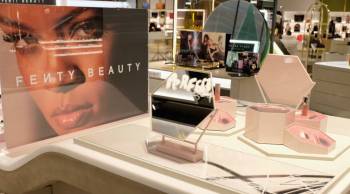In which Dove’s ‘Real Beauty’ campaign faces real backlash
In which Dove’s ‘Real Beauty’ campaign faces real backlash
In Dove’s latest advertisement, “Patches,” a scientist prescribes a “beauty patch” to women suffering from low self esteem. Over the course of four minutes, the patch-wearing “patients” move from lines like “If I were more confident, I’d have the confidence to approach a guy, maybe,” to “I’ve defintiely opened up something inside of me to make me feel more… great.”
Magic! Except spoiler: There’s nothing in the beauty patch. Dove’s not selling any patches — they’re selling the story of women finding inner beauty, a.k.a., the Dove brand’s strategy since 2004. They’ve sold creams to slow the signs of aging with messages about being “pro age.” They’ve launched self-esteem programs and campaigns critiquing the whole business of advertising.
A Dove spokesman told Ad Age they created the “Patches” video “to intentionally provoke a debate about women’s relationship with beauty.” And what a debate they’ve started: The “Patches” ad has been called patronizing, garbage and at least one word we wouldn’t print on our own site. In just one hour Friday morning, at least 500 people watched this parody video:
Dove grew from a $200 million soap brand in the early 1990s into a nearly $4 billion corporation by 2013, selling everything from deodorant to hairspray. They’ve sold products — lots of products — with the message “You are more beautiful than you think.”
Andrea Learned, a communications consultant and author of “Don’t Think Pink,” a book about marketing to women, says Dove’s original ‘Real Beauty’ campaign turned selling soap into an important cultural dialogue, helping women embrace their bodies—old or young, fat or thin.
But she thinks the latest campaign has “lost its way. It kind of creeped me out right from the beginning,” she says. She thinks the tactic in the video of misleading the female subjects about the treatment they’re getting in order to show that really, you are beautiful if you feel beautiful, will alienate many female consumers. She found herself wondering if the real Dove ad might not just be the parody. “Get out of digging this hole for women—of being these incredibly insecure beings,” she says. “That is old news.”
Former ad executive Cindy Gallop agrees that the new Dove campaign is “patronizing” and “not credible.” She thinks it’s a big misstep for Dove’s ad agency, Ogilvy & Mather. But she also thinks any publicity can be good publicity—if the brand embraces the criticism and builds on it.
“The fact that they are stimulating dialogue, that we are talking about this, in whatever context, is terrific,” Gallop says. “And it’s all tremendous fodder for them to take the campaign forward in an even stronger way next time out of the gate.”
Gallop has a pitch for Dove’s next campaign: real-life men saying what they like in their real-life women. Grey hair, freckles, curves—things most advertisers never portray in their impossible-to-acheive models of female beauty.
Is all this pushback a sign that Dove doesn’t have its pulse on what women think any more? What do you think of the campaign? Tell us on Twitter or Facebook.
There’s a lot happening in the world. Through it all, Marketplace is here for you.
You rely on Marketplace to break down the world’s events and tell you how it affects you in a fact-based, approachable way. We rely on your financial support to keep making that possible.
Your donation today powers the independent journalism that you rely on. For just $5/month, you can help sustain Marketplace so we can keep reporting on the things that matter to you.


















